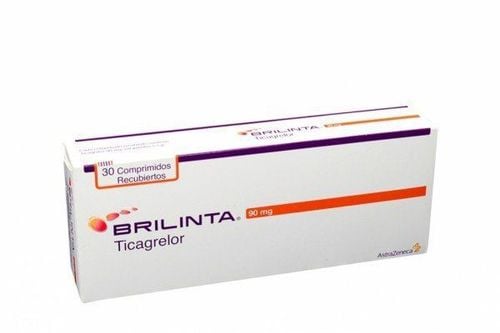This is an automatically translated article.
The article is professionally consulted by Master, Doctor Nguyen Van Phong - Cardiovascular Center - Vinmec Times City International General Hospital.Currently, many people lead a sedentary lifestyle, eat poorly, ... leading to atherosclerosis tends to increase, gradually becoming the leading cause of death in the world. Atherosclerosis silently damages arteries in various organs, especially coronary, cerebral and peripheral arteries.
1. How is atherosclerosis related to coronary artery disease?
Atherosclerosis is a condition in which the walls of the arteries are thickened, including the medium and large arteries. This condition is formed mainly by the deposition of fat and cell membranes in the inner lining of the artery wall called plaque. Atherosclerotic plaques often appear after many years of gradual formation with mechanisms that are now better understood.The initial stage of atherosclerosis is caused by local hemodynamic disturbances (e.g. eddy) that will alter the normal structure of the inner layer of the artery. The earliest appearance of the lesion is edema of the vessel wall without fat, then the fat-eating cells in the form of granular cells, which gather in clusters under the endothelial cells. At this stage, the vascular wall is disordered, facilitating the lipid deposition process. This is followed by the formation of fatty streaks on the surface of the arterial endothelium.
Stage 2, simple plaque will appear. The plaque thickens, in the middle there is a necrotic area in a fibrous shell. This necrotic area contains a lot of fatty acids and cholesterol. At this time, atherosclerotic plaque progresses very quickly, causing the arteries to narrow gradually.
The final stage is the transformation into atheroma causing complications that block the diameter of the artery and ischemic stroke.
Thus, the main phenomenon of this development process is the ulceration of the inner layer, which is the endothelial cell layer, which is torn, blood will flow through the ulcer site to form a blood clot. Tear of the endothelium causes platelet adhesion, the origin of the embolism, and the formation of an occlusion, which covers the ulcer site. This is also the beginning of complications later. Over time, the atherosclerotic plaques will grow more and more, the calcium plaques stick together, the fibrous organization grows more, thereby causing arterial blockage.
We all know, arteries are blood vessels that carry oxygen-rich blood and nutrients from the heart to the organs in the body. Atherosclerosis will narrow the vessel lumen, reducing blood flow to nourish the organs.
Atherosclerosis can occur in any artery in the body. Depending on the atherosclerosis, it will cause different pathological conditions such as coronary artery disease, carotid atherosclerosis, renal artery stenosis, peripheral vascular disease,... In which atherosclerosis It is a common cause of stroke and coronary heart disease (angina).

2. Manifestations of coronary artery disease due to atherosclerosis
Atherosclerosis often has no signs or symptoms until the lumen is severely narrowed or completely blocked. Many patients are unaware of the disease until an emergency such as a heart attack or stroke occurs.Coronary arteries supply oxygen-rich blood to the heart muscle. If atherosclerotic plaque narrows or blocks the lumen of an artery - commonly known as coronary artery disease - a common symptom is angina pectoris.
Stable atherosclerotic plaque in the coronary arteries will cause stable angina pectoris. The sudden detachment of atheroma accompanied by a blood clot causes a heart attack or unstable angina.

3. Risk factors for coronary artery disease
The risk factors for the formation of coronary atherosclerosis in particular and atherosclerosis in general include:Hyperlipidemia: In which, hypercholesterolemia is the main risk of atherosclerosis and the cause. cause ischemic cardiovascular disease. However, the risk also depends on the type of lipoprotein that carries cholesterol. In particular, LDL cholesterol plays an important role in the pathogenesis of atherosclerosis. It can be said that any increase in LDL cholesterol of any degree in the blood carries a risk of atherosclerosis. Lipoprotein is also a high risk factor in excess of 0.3 g/l. Hypertension is a very high risk factor, especially for cerebral blood vessels, increasing smooth muscle cell proliferation, thickening the arterial media, and increasing elastin, collagen, and glycosaminoglycans. The pressure created by high blood pressure also makes the plaque more prone to rupture, as well as increases the endothelial permeability to cholesterol. Smoking: also a major risk factor for atherosclerosis, the risk of coronary heart disease doubles in smokers, especially those who smoke 40 cigarettes/day. Diabetes: As one of the causes of lipid disorders, it is easy to cause atherosclerosis. Obesity, inactivity Stress Birth control pills
4. Methods of surveying coronary atherosclerosis
There are many methods used to investigate coronary atherosclerosis, including:Stress tests include: Stress electrocardiogram, stress echocardiogram, stress myocardial scan. Diagnostic imaging includes: Multi-slice computed tomography, cardiac magnetic resonance imaging, myocardial perfusion scintigraphy. Cardiac catheterization coronary angiography is an invasive method to investigate coronary atherosclerosis and is also the gold standard for diagnosis of coronary artery disease.

5. When to see a doctor?
According to the American Heart Association (AHA), people should have coronary heart disease screening starting at age 20 if multiple cardiovascular risk factors are present. The degree of regular check-up or not depends on the risk factors of each person:People with chronic diseases such as diabetes, hypertension, dyslipidemia,... Long-time smokers , obesity, inactivity,... Family history of coronary heart disease. Elderly. Currently, Cardiovascular Center - Vinmec International General Hospital is one of the leading centers in the country for examination, diagnosis, screening and treatment of cardiovascular diseases. With the convergence of a team of experienced and reputable experts in the field of surgery, internal medicine, interventional cardiac catheterization and the application of advanced techniques in the diagnosis and treatment of diseases. Cardiovascular management, along with a system of modern equipment, on par with the most prestigious hospitals in the world such as: MRI 3 Tesl a (Siemens), CT 640 (Toshiba), system Avace high-class anesthesia, Hybrid operating room according to international standards... The Cardiovascular Center at Vinmec International General Hospital has achieved many successes and gained the trust of a large number of patients.
Please dial HOTLINE for more information or register for an appointment HERE. Download MyVinmec app to make appointments faster and to manage your bookings easily.














